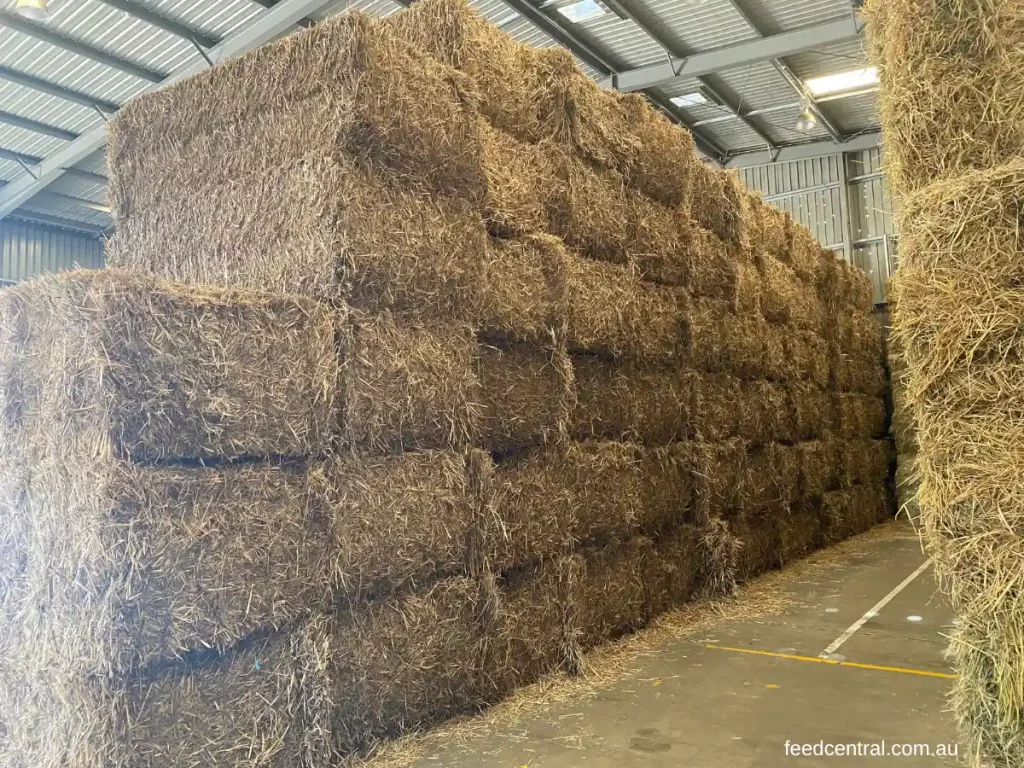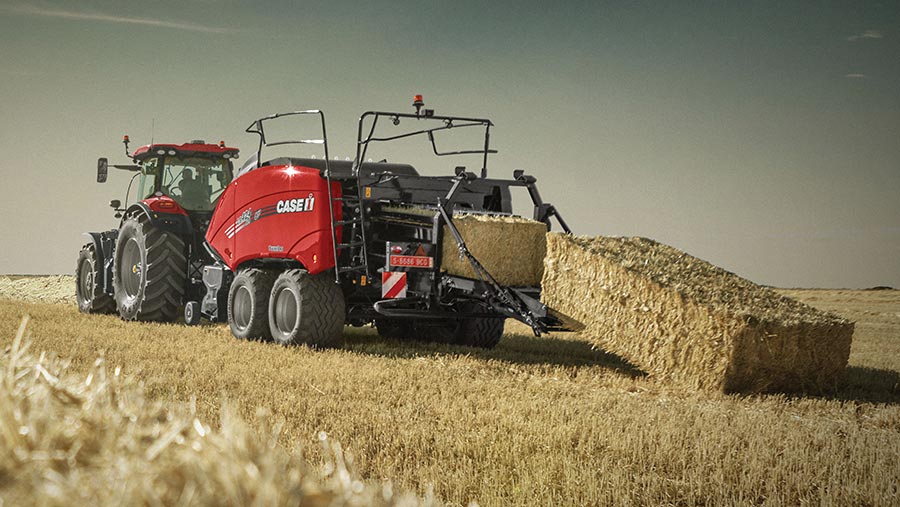There are around 20 to 25 square bales in a large round bale of hay. This number can vary based on bale size.
When it comes to understanding the conversion of round bales to square bales, it’s essential to know how many square bales can be yielded from a single round bale. For farmers and agricultural workers, this conversion factor plays a crucial role in managing and transporting hay efficiently.
Whether it’s for feeding livestock or storage purposes, knowing the approximate number of square bales that can be obtained from a round bale is valuable information. By grasping this conversion ratio, farmers can plan their hay baling and storage operations effectively, ensuring they have an adequate supply of square bales for their needs. Let’s explore this conversion further and understand how it impacts farm management practices.

Understanding The Basics
Square Bales: Small rectangular bales of hay compressed for easy handling.
Round Bales: Large cylindrical bales of hay often used for feeding livestock.
- Shape: Square bales are compact and easy to stack, while round bales are large and bulky.
- Handling: Square bales are manually handled, whereas round bales usually require machinery.
- Storage: Square bales are stored indoors due to their smaller size, while round bales can be stored outside.
- Cost: Round bales are often cheaper per unit compared to square bales due to lower labor costs.
| Aspect | Square Bales | Round Bales |
|---|---|---|
| Size | Small and compact | Large and cylindrical |
| Handling | Manual handling | Machinery required |
| Storage | Indoor storage | Outdoor storage |
| Cost | Higher labor costs | Lower labor costs |
Calculating The Conversion
Factors Affecting Conversion
- Quality of hay
- Size of the round bale
- Moisture content
Equation For Converting Round Bales To Square Bales
In order to determine the number of square bales in a round bale, you can use the following equation:
| Round Bale Weight (lbs) | Conversion Factor | Number of Square Bales |
|---|---|---|
| 1000 | 0.05 | 50 |
| 1500 | 0.05 | 75 |
| 2000 | 0.05 | 100 |
Implications For Farmers
When it comes to baling hay, farmers need to consider the implications of converting round bales to square bales. This conversion can have significant effects on efficiency, cost, storage, and transportation for farmers.
Efficiency And Cost Considerations
Converting round bales to square bales allows for greater efficiency in feeding and handling. With square bales, farmers have the advantage of better portion control as compared to round bales, reducing hay wastage and ensuring that livestock receive the appropriate amount of feed. Additionally, the use of square bales can allow for easier handling by farmworkers, potentially reducing labor costs. However, the process of converting round bales to square bales may require additional machinery and labor, which can lead to increased production costs for farmers.
Storage And Transportation Challenges
One of the key challenges when converting round bales to square bales is the storage and transportation of the hay. Square bales typically require more space for storage compared to round bales due to their individual packaging. This can pose challenges for farmers with limited storage facilities, potentially leading to increased infrastructure costs. Furthermore, transportation of square bales may require specialized equipment and can be more time-consuming, impacting the overall logistics and cost of hay distribution for farmers.

Challenges And Considerations
When it comes to determining how many square bales are in a round bale, there are several challenges and considerations to keep in mind. These factors can impact both the efficiency of feeding and handling as well as the overall cost and convenience. Let’s take a closer look at two main areas of concern: weather and environmental factors, and feeding and handling challenges.
Weather And Environmental Factors
Weather and environmental factors play a significant role in the number of square bales that can be obtained from a round bale. It’s important to consider the following:
- Moisture content: High moisture content can lead to mold and spoilage, resulting in a reduced number of usable square bales.
- Storage conditions: Improper storage can lead to damage and loss, further decreasing the number of usable bales.
- Seasonal variations: Different seasons can affect the quality and density of the hay, resulting in varying bale sizes and quantities.
Feeding And Handling Challenges
Feeding and handling challenges also impact the number of square bales in a round bale. Here are some considerations:
- Equipment limitations: Not all farms may have the necessary equipment to handle large round bales, making it more challenging to convert them into smaller square bales.
- Demand and usage: Understanding the demand and usage of square bales on your farm is essential in determining how many you’ll need. It’s important to consider factors such as the number of animals and their feeding requirements.
- Storage and transportation: The logistics of storing and transporting large round bales versus smaller square bales should be taken into account. Square bales may be more manageable and versatile in terms of storage and transportation options.
These challenges and considerations demonstrate the complexity of estimating the number of square bales in a round bale. It’s important to evaluate your specific needs and circumstances to make an informed decision that optimizes efficiency, cost-effectiveness, and convenience in your hay feeding and handling process. by addressing these challenges and considerations.
Optimizing Bale Utilization
When it comes to maximizing your hay production and minimizing waste, optimizing bale utilization is crucial. By understanding how many square bales can be obtained from a round bale, you can make the most out of your resources and ensure that you have enough hay for your livestock during the colder months.
Strategies For Maximizing Round Bale And Square Bale Usage
When it comes to optimizing bale utilization, there are several strategies you can implement:
- Invest in a hay bale processor: A hay bale processor can help you break down round bales into smaller square bales, maximizing their usage. This way, you can easily portion out the hay as needed without any wastage.
- Use a bale accumulator: A bale accumulator can help you gather and organize small square bales more efficiently. By neatly grouping them together, you can store and transport them with ease.
- Implement proper storage: Ensuring that both your round and square bales are stored in a dry, well-ventilated area will help preserve their quality and reduce the risk of spoilage.
- Rotate bales: By rotating your bales, you can ensure that older bales are used first, minimizing wastage and preventing spoilage.
Tips For Enhancing Hay Quality And Preservation
Besides optimizing bale utilization, it’s important to focus on preserving the quality of your hay. Here are a few tips to help you enhance hay quality and preservation:
- Harvest at the right time: Cutting your hay at the proper stage of maturity ensures optimal nutritional value and palatability for your livestock.
- Bale at the right moisture content: Baling hay at the correct moisture content helps prevent mold growth and maintain hay quality.
- Use high-quality wrap or twine: Investing in high-quality wrap or twine for your bales helps maintain their integrity and prevents spoilage.
- Store bales off the ground: Keeping your bales off the ground, either on pallets or elevated racks, prevents moisture absorption and extends their shelf life.
- Monitor for pests: Regularly inspect your bales for signs of pests and take immediate action to prevent infestation.
By implementing these strategies and tips, you can optimize bale utilization, minimize waste, and ensure that your hay remains of high quality for your livestock.

Frequently Asked Questions For How Many Square Bales In A Round Bale
How Much Hay Is In A 4×5 Round Bale?
There are typically 8 to 10 square bales worth of hay in a 4×5 round bale.
How Many Bales Are In A 4×4 Round Bale?
A 4×4 round bale is equivalent to about 5 to 6 square bales.
How Many Round Bales In A Big Square Bale Of Straw?
A big square bale of straw contains around 16 round bales. This is approximate and may vary.
How Many Square Feet Is A Round Bale?
A round bale typically covers 400 to 1,000 square feet, depending on its size.
Conclusion
Understanding the conversion of round bales to small square bales can assist farmers in managing their hay inventory. With the knowledge of how many small bales are equivalent to a large round bale, agricultural operations can be optimized for efficiency and cost-effectiveness.
This understanding is vital for the overall success of hay production and farming endeavors.

